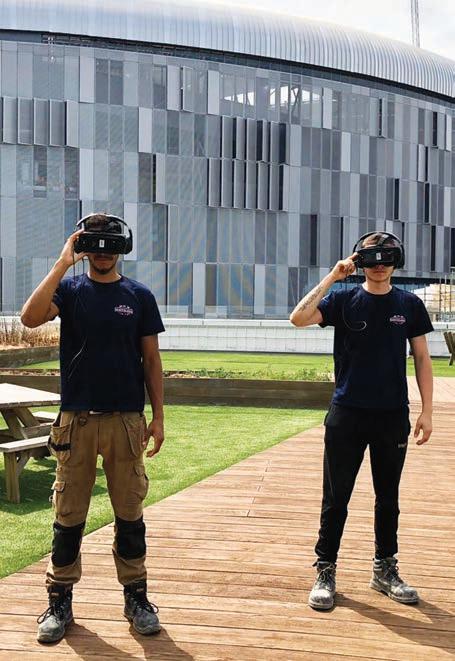
2 minute read
Innovation drives performance
from Scaffolding Magazine 2021
by NASC
BENEFITS CHECK
INNOVATION UNDERPINS SAFETY, PERFORMANCE AND PRODUCTS IN THE SCAFFOLDING AND ACCESS INDUSTRY. SEAN PIKE REPORTS
Advertisement
All manufacturers of scaffolding
products strive towards the same goals. Maximising installation safety, simplicity and efficiency – which have a direct bearing on competitiveness and profitability – and, of course, ensuring safety is optimised, have always been key areas in which contractors have looked towards their suppliers.
GKR used virtual reality for its safety training
In both respects, of course, the industry cannot stand still and there is a constant drive towards developing systems of scaffolding, access, weather protection and technology that bring about improved performance.
At the heart of this scenario is innovation. Yet while it may be manufacturers who introduce new methods, it is so often the contracting sector that provides the inspiration. Equipment installers are invariably best placed to identify areas where specific challenges exist and, by then working closely with the manufacturing sector, solutions can often be created. There is no substitute for direct feedback from those ‘in the field’.
A range of examples can be noted where this principle has brought about clear-cut benefits. Not only is there a greater choice of specific components available today to meet a vast range of installation needs, but other key areas, such as project design, also bring new opportunities.
Computer-aided systems – such as the Layher Scaffold Information Modelling (SIM) software – is perhaps a prime example. With on-screen or virtual visualisation capability that not only helps optimise installation efficiency by, for example, identifying potential clash areas, they also impact directly on the accurate identification of material needs. This principle could also be utilised in training, specifically training of scaffolders, safely, in the virtual world – which some NASC/ CISRS members have already begun to trial, demonstrating that again, collectively, the NASC leads the way.
Yet while close links between contractor and manufacturer often create a path towards innovations that improve efficiency, it is in the
area of safety that, perhaps, the most important benefits can be seen.
From optimised methods of construction, where safe erection is built into product design, to help to ensure site delivery and storage procedures follow appropriate guidelines – all are central to safe operating procedures. So often they have been brought about through cooperation by all relevant parties.
The development of lightweight components is clearly under the spotlight in this context. The availability of high tensile steel has enabled manufacturers to maintain or even increase the strength of their products while, at the same time, reducing their weight. This has a direct bearing on physical handling to the extent that it can make a positive contribution to reducing the risk of musculoskeletal disorders.
Moreover, lighter weight can often mean less bulk with a beneficial impact on transport and storage. When the view is taken that manufacturers and contractors are, in effect, part of the same team then the route for ever greater innovation is well founded.
As a consequence, the resulting steps towards better site efficiency and safety that can be readily identified today, point towards even greater benefits in the future. ●









